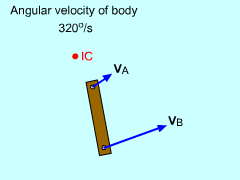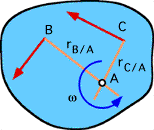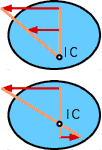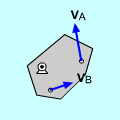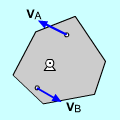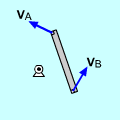| Ch 5. Rigid Body General Motion | Multimedia Engineering Dynamics | ||||||
| Fixed Axis Rotation | Plane Motion Velocities | Zero Velocity Point | Plane Motion Accelerations |
Multiple Gears |
Rot. Coord. Velocities | Rot. Coord. Acceleration | |
| Instant. Center of Zero Velocities | Case Intro | Theory | Case Solution | Example |
| Chapter |
| - Particle - |
| 1. General Motion |
| 2. Force & Accel. |
| 3. Energy |
| 4. Momentum |
| - Rigid Body - |
| 5. General Motion |
| 6. Force & Accel. |
| 7. Energy |
| 8. Momentum |
| 9. 3-D Motion |
| 10. Vibrations |
| Appendix |
| Basic Math |
| Units |
| Basic Dynamics Eqs |
| Sections |
| eBooks |
| Dynamics |
| Fluids |
| Math |
| Mechanics |
| Statics |
| Thermodynamics |
| ©Kurt Gramoll |
|
|
|||||
|
|
The "Instantaneous Center of Zero Velocity" or IC, is the point on a moving body that has zero velocity. The IC does not have to be on the actual body. The IC may move as the body moves. If the IC is used as the reference point, the relative velocity equation becomes vB = vA + vB/A vB = 0 + vB/A vB = ω rB/A |
||||
|
This is the same relationship that was developed for fixed rotation of a rigid body. The only difference is IC may not be a fixed point, and needs to be found. In general, the velocity direction and magnitude of one point and the velocity direction of another point on the same body need to be known to use the IC method. In most cases, lines perpendicular to the two velocity vectors will intersect at the IC point as shown. If the velocity vectors are parallel, then the distance from the IC to the velocity vectors is proportional, as shown in the figures. If the velocity vectors are parallel and have the same magnitude and direction, then there is no IC and the body has no rotation.
|
||||
|
|||||
